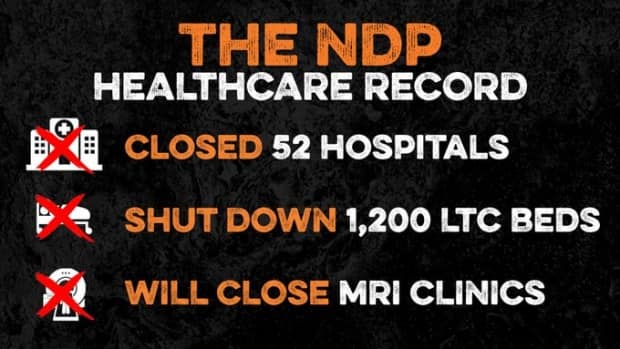Sask. Party campaign focuses on NDP's 1990s policies because 'it works': political scientist
The Saskatchewan Party doesn't hesitate to remind potential voters about the decisions the provincial NDP government made several leaders ago, during the 1990s.
Sask. Party Leader Scott Moe has repeatedly referenced the NDP's closure of 52 rural hospitals and 176 schools in the '90s on the 2020 campaign trail, including during last week's leaders' debate. Social media ads warn voters of what happened back then, mimicking language used in the 2016, 2011 and 2007 campaigns.
Jim Farney, a political scientist and head of the University of Regina's department of politics and international studies, says the Sask. Party's continued focus on decisions made when some current voters were babies is simple.
"Because it works so well," he said. "Being reminded of the NDP record in rural Saskatchewan in the '90s … helps keep people motivated."
Reminders of hospital and school closures in particular keep the Sask. Party's older, rural base loyal by stirring up memories of what they endured at the time, says Farney. The overall outlook for Saskatchewan residents in the '90s was so grim that a big closure in a small town was a "deeper blow to the psyche," he says.
"This stuff is really deeply personal. The closure of the hospital, for example, not just marked the end of their small town, but it caused the end," he said.
"The school closure that came after that was just something that was going to happen. It was inevitable once that hospital decision had been made."
The Sask. Party has been in power since 2007, and polls released during the campaign suggest it's leading in rural areas, with 70 per cent support. At his party platform announcement, Moe was asked about the usefulness of comparing his party to one that was in power more than 13 years ago.
"We have a record of growth, they have a record of decline," Moe said.
"We feel it's important that people know the record of this party and we will continue to do what we say we are going to do, versus the record of a party that closed hospitals and closed schools across this province."
The NDP has said it's fine if the Sask. Party wants to talk about the 1990s — when NDP Leader Ryan Meili was in high school.
"As a doctor, Ryan worked in hospitals — he didn't close them," the party said in a statement.

Farney says the Sask. Party's strategy seems unique to the province.
"I can't think of another province where they're going back to the way that the opposition ran things 20, 25 years ago now."
That's because no other jurisdiction is faced with the "symbolically dramatic" decisions the Roy Romanow NDP government was, according to health policy expert and Saskatchewan expat Steven Lewis.
Romanow beat out Progressive Conservative Grant Devine in 1991, as Devine's party left behind about $14 billion in debt.
Farney said Devine's government had created a debt crisis for the province, which was worsened as the feds slashed transfers. More people were also moving to the city, and governments turned their focus to balanced budgets, he says. That meant big changes for small towns were afoot — but those changes didn't sit well.
Lewis agrees. When Romanow came to power, the province that had been a front-runner in health care had more hospitals than Quebec. The majority were funded for eight to 12 beds, Lewis said.
"The hospitals themselves were a misnomer.… While they had an 'H' on them, in no way were they acute-care hospitals."
Many hospitals in small towns were converted into community health-care centres or long-term care facilities, Lewis said.
"Nevertheless, there was fierce, fierce, fierce opposition [to the closures] in the local communities."

When Lewis was CEO of the Health Services Utilization and Research Commission in Saskatchewan in 1998, his team surveyed hundreds of people to assess the impact of the health-care restructuring in the rural communities. They found that people remained deeply upset, even though they found it didn't impact their quality of local care.
"Their test was not whether it was going to adversely affect your health or whether they weren't going to have good access to emergency services," Lewis said. "It was, 'You took something away from us and we will never forgive you for it.'"
He said it's not surprising that what happened then is still used as fodder now, especially because it acted as a teaching moments for politicians in terms of how rural communities would react to big health-care decisions.
However, he still believes it's "cheap politics," because "from a health perspective, it was absolutely the right thing to do." He also notes the Sask. Party isn't campaigning on reinstating the 52 hospitals or rebuilding all of the schools.
Farney said another part of the Sask. Party's efforts to remind people about decisions made amid financial hardship in the 1990s could have to do with what the party will face moving forward if re-elected — including its own financial challenges.
"It's a way of saying there's not a lot of difference between us and them, in terms of the challenges facing the province. But we're optimistic and believe we can grow."
The provincial election is Oct. 26.


